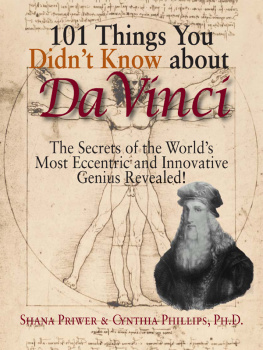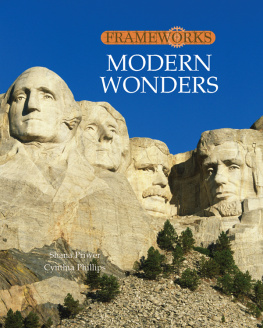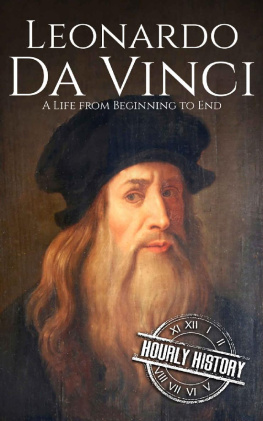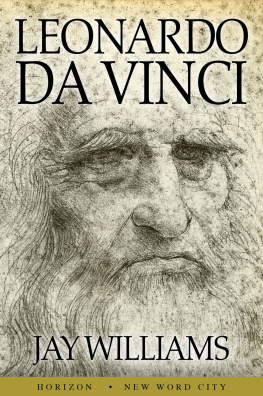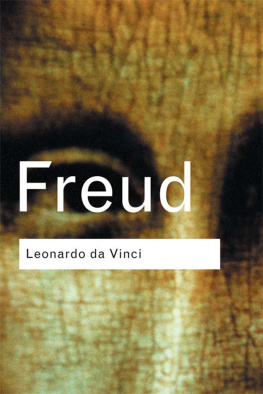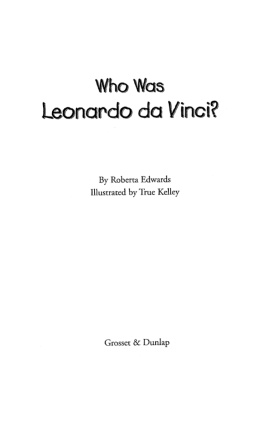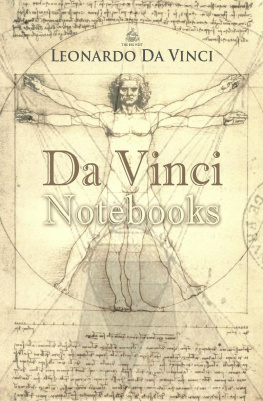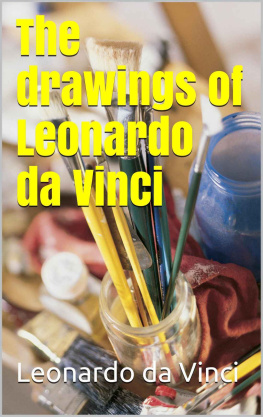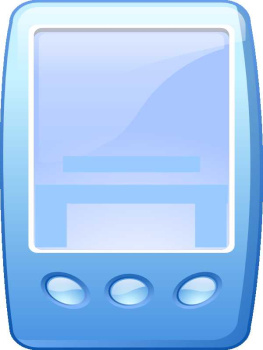101 THINGS
YOU DIDN'T
KNOW ABOUT
Da Vinci
The Secrets of the World's Most Eccentric
and Innovative Genius Revealed!
SHANA PRIWER
&
CYNTHIA PHILLIPS, PH.D.

Adams Media
Avon, Massachusetts
To our children, Zoecyn, Elijah, and Benjamin
Copyright 2005, F+W Publications, Inc. All rights reserved. This book, or parts thereof, may not be reproduced in any form without permission from the publisher; exceptions are made for brief excerpts used in published reviews.
Published by Adams Media, an F+W Publications Company
57 Littlefield Street, Avon, MA 02322
www.adamsmedia.com.
ISBN: 1-59337-346-5
Printed in Canada.
J I H G F E D C B
Library of Congress Cataloging-in-Publication Data
This publication is designed to provide accurate and authoritative information with regard to the subject matter covered. It is sold with the understanding that the publisher is not engaged in rendering legal, accounting, or other professional advice. If legal advice or other expert assistance is required, the services of a competent professional person should be sought.
From a Declaration of Principles jointly adopted by a Committee of the American Bar Association and a Committee of Publishers and Associations
Many of the designations used by manufacturers and sellers to distinguish their products are claimed as trademarks. Where those designations appear in this book and Adams Media was aware of a trademark claim, the designations have been printed with initial capital letters.
This book is available at quantity discounts for bulk purchases.
For information, please call 1-800-872-5627.
Contents
Introduction
Everyone's heard of Leonardo da Vincihe painted the Mona Lisa, he was the first Renaissance man, and didn't he write in some kind of code? But there's much more to Leonardo than that! Did you know that he was one of the first people to make detailed anatomical drawings? Or that he designed one of the first robots? Leonardo da Vinci was not only an amazing artist, he was also a talented scientist, inventor, and musician. Was there anything he wasn't good at? Indeed, Leonardo rarely failed at anythingexcept he did have a problem finishing what he started!
Leonardo came from less than extraordinary beginnings. He was born in 1452, to a young unmarried couple in the Tuscany region of Italy. Both his parents married other people and eventually had seventeen more children, but none of Leonardo's half siblings went on to become particularly famous. Clearly, Leonardo was special.
By the time he was sixteen, Leonardo's artistic talents were becoming obvious, and his father apprenticed him to a leading artist in Florence. When Leonardo painted a small angel in one of his boss's paintings, he did such a good job that his master supposedly took one look and swore he'd give up painting forever! Leonardo certainly knew how to make an impression.
Throughout his long career, Leonardo worked for everyone from kings and dukes to warlords. He wasn't just a painter, eitherhe traveled as a military engineer with the infamous Cesare Borgia, using his genius to create machines of war. During more peaceful times, Leonardo was fond of making mathematical discoveries, investigating the secrets of the human body, and inventing parachutes. In his spare time, he even came up with plans to divert an entire river!
In spite of these endeavors, Leonardo is mostly famous today for his paintings, though only a handful of his finished works survive. Leonardo started countless projects, but finished only a few. Even the paintings he did manage to finish suffered from his constant innovation. In fact, most of Leonardo's inventions weren't ever builthe would come up with an amazing design, work on it for a while, and then when he was satisfied that it might work (or was just plain bored), he'd move on to something else. Luckily for us, Leonardo wrote about these unfinished projects in his detailed notebooks.
Even during the Renaissance, it was clear that Leonardo was a genius. But when we look at his accomplishments today, the breadth of his talents is even more remarkable. Not only did he paint one of the most amazing and talked-about paintings of all time, the Mona Lisa, he came up with designs for a helicopter, a mechanical loom, a car, a bicycle, and a multi-barreled gun!
Leonardo really is the definition of a Renaissance man: He was not just good at what he did, he was a groundbreaking innovator. Many of his designs would have revolutionized society if they'd been built during his time. Of course, that was one of Leonardo's biggest problemshe was ahead of his time. Although it would have been impossible to build many of his inventions with the limited resources available during the Renaissance, when models have been built in modern times, they've worked perfectly. Imagine what he could have accomplished with modern technology!
Fasten your seatbelts, sit back, relax, and enjoy this tour through the phenomenal accomplishments of one of the most amazing people ever to live!
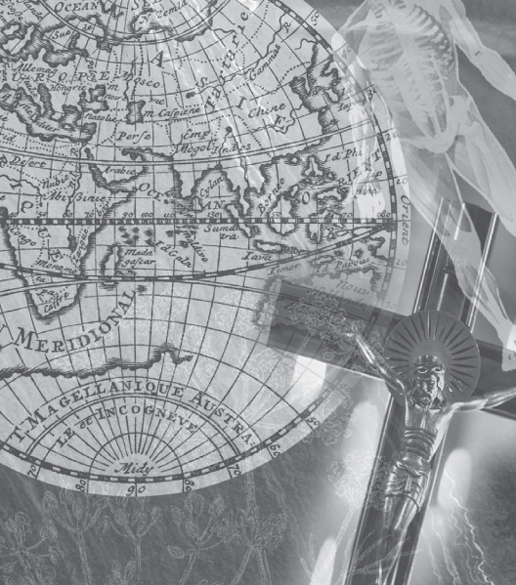
Part 1
IN THE BEGINNING
One of the Renaissance's favorite sons had a less-than-spectacular start in life. Born the illegitimate son of a notary and a peasant girl in a small town near Florence, Italy, Leonardo da Vinci soon rose to fame as no one else could (or did). His family, his surroundings in the Tuscan countryside, and the time of his birth all influenced Leonardo's formative yearsthe early years of the burgeoning Italian Renaissance.
Because of his illegitimate birth, Leonardo didn't have to follow in his father's footsteps. He was able to spend much of his childhood studying exactly what he wanted, rather than what he was told to; he spent years looking at and drawing the world around him. Later, Leonardo's apprenticeship in Andrea Verrocchio's workshop had an enormous impact on his artistic and scientific works. Once he graduated to doing his own projects, he incorporated many of the Renaissance's rapidly evolving themes. At the time Leonardo entered Verrocchio's workshop, Florence was the hub of a bustling new world of intellectual expression, trade, banking, and other innovations. As Europe burst out of the stagnant Middle Ages into a flowering period full of promise, Leonardo da Vinci was at the center.
1
Where it all began: Vinci, Italy
Every good story has an eventful beginning, and this one begins with the birth of a child named Leonardo in Italy, on April 15, 1452. In those days, it was customary for Renaissance Italians to take the name of their birth city as part of their full identification. And so Leonardo, by virtue of being born in Vinci, was known as Leonardo da Vinci (Leonardo from Vinci).
Vinci is located about fifty kilometers to the west of Florence, deep in the Luscany region. Vinci is also near Pisa (home of the famed Leaning Tower), as well as Siena and Lucca. Long before the Renaissance, Vinci was home to the Etruscans and contained many ancient castles, including the Castello Guidi (built for the Conti Guidi during the Middle Ages). The town's rolling green countryside must have been a source of inspiration for Leonardo's budding artistic talent. Surrounded by such beauty, who wouldn't be moved to draw it?
However, not everyone thinks Leonardo actually came from Vinci. One theory holds Leonardo was actually born in Anchiano, a town located about three kilometers from Vinci. Why? For one thing, Da Vinci's family supposedly lived there. Anchiano also boasts a farmhouse that many people think is where Leonardo first entered this world, fittingly nicknamed the Casa Natale di Leonardo (which literally means the birth house of Leonardo). Today, the farmhouse is home to a permanent exhibit of Leonardo's drawings and other works. Restored in the mid-1980s, the house is decorated with many of Leonardo's landscape paintingsso if nothing else, it's a great place to see Leonardo's work!
Next page
